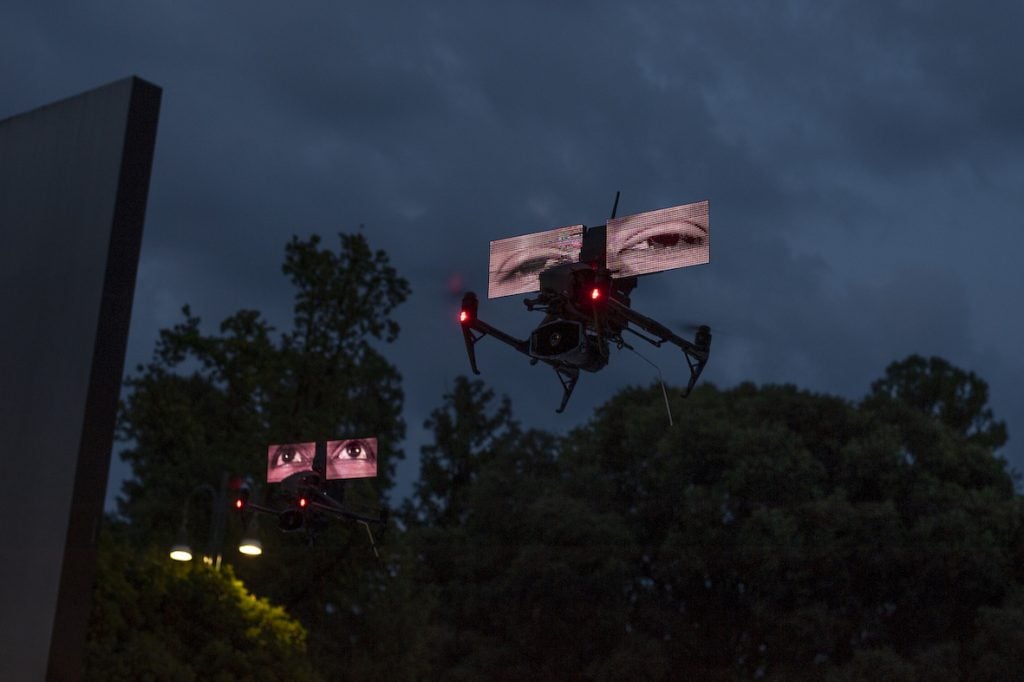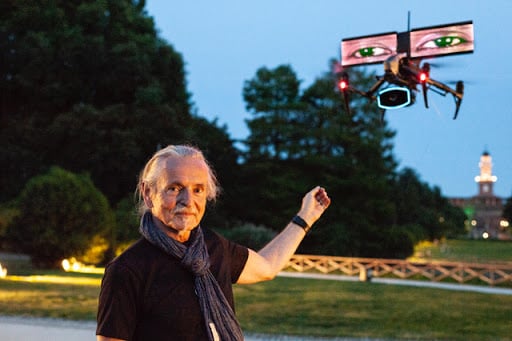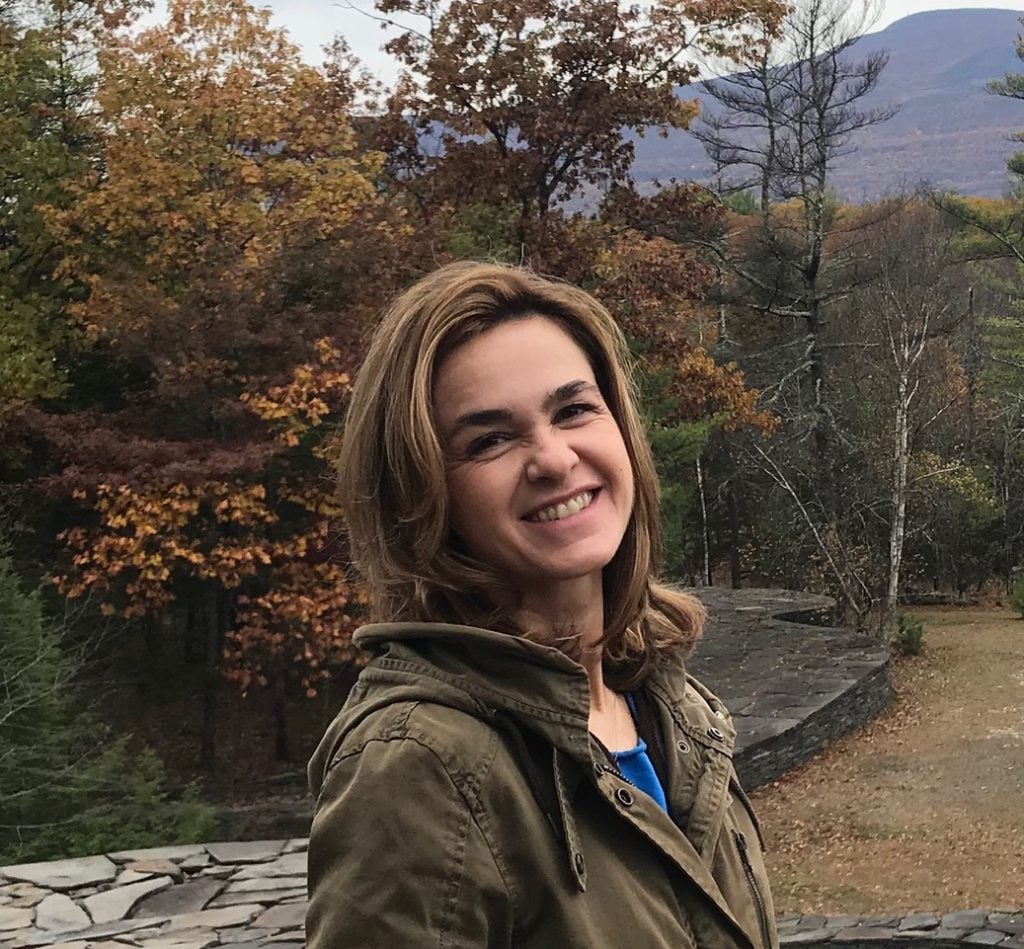Op-Ed
Artists Are Finding Inspiring Ways to Adapt Their Work to a World in Crisis. Arts Organizations Must Do the Same
A project by Krzysztof Wodiczko provides an object lesson in the power of empathy.

A project by Krzysztof Wodiczko provides an object lesson in the power of empathy.

Micaela Martegani

After four long, trying months, during which the world realized that the COVID-19 virus was here to stay, and in which widespread protests for racial equity sprang up around the globe, our outlook on society and on ourselves has changed in profound ways.
Our world is fractured, and in a divided world, connections are looked upon with suspicion. Legitimate fear can quickly turn into paranoia that undermines human interactions. Fear and paranoia are grounded in real loss and real pain, but what will happen to people if we sever every contact? Survival is one of the strongest instincts, but socialization is equally important if we do not want to simply live, but to thrive and find joy in living.
Art can open up dialogues that are based in shared experiences, instead of anger, and it can create meaningful connections and understandings between people with different experiences. Art can bring people together physically, but more importantly, emotionally. And it can help bridge dangerous divides.
Public art, in particular, can do this in a way that is safe and meaningful. Most importantly, the connection is open and free for everyone to partake.
As I wrote in More Art in the Public Eye, empathy is a good place to start as a strategy for human connection: it works to break down the barriers between us and the perceived “other,” and identification moves us towards kindness and social care. This is how we can start to collectively heal.
More Art is a nonprofit arts organization that harnesses the power of public art to promote social justice. For us, the combination of COVID-19 and the current protests has presented an opportunity to rethink what we have been doing. By stepping off the spinning wheel that comes with producing large-scale art projects, we have been able to view things from a wider vantage point.
Before COVID-19, we were working on a major project titled Ustedes (Them) by Krzysztof Wodiczko. The pandemic stopped us in our tracks and forced us to reconsider our approach. We started by asking ourselves: What are we really trying to achieve? Is it relevant now? What is the greatest contribution of this project, and how can we preserve that? The exercise has proved highly useful. It helped us clarify things that we knew all along, but were not verbalizing, and led us to a different approach for the project.

Krzysztof Wodiczko alongside Loro (Them) in Milan, 2019.
Ustedes is a high-tech project that utilizes anthropomorphized drones to broadcast the voices and perspectives of immigrants. It was scheduled to be a series of outdoor performances in late August and September on Governor’s Island and Flushing Meadows Park in New York. We produced the first version of this project, called Loro (Them), last year in Milan, investigating the diaspora moving people from Africa to southern Europe.
The New York version of the project aimed to tell the stories of the immigrants from South and Central America, both documented and undocumented. We have been working closely with Make the Road New York, a progressive, grassroots, immigrant-led organization that empowers immigrant and working-class communities to achieve dignity and justice through legal services, education initiatives, community organizing, and policy innovation. After meeting with dozens of immigrants over many months and hearing about their personal experiences, we felt the story that needed to be told most urgently is the one that is least discussed: labor issues and workplace discrimination.
Immigrants often work longer hours for much less money, have no insurance or pension, and may be subjected to sexual harassment as well as xenophobic and racist comments and behaviors with no path to proper recourse. In particular, we have been talking to elderly people, who have spent decades working in difficult and precarious situations and are left without any safety nets when they can no longer work.
We felt strongly this project should not be postponed. With the pandemic raging, many of those unsung immigrants we have been talking to are the very people now on the front line—they are the essential workers who have risked their lives to keep our city clean, delivering packages and food to people sheltering at home, they are the ones working at grocery stores, post offices, hospitals. They are the ones who have kept the city alive, but they are also the ones who continue to be laid off or furloughed en masse, who are food insecure, who get sick in higher numbers. We can’t wait to tell their stories.
However urgent the message is, we also need to contend with local closures, restrictions, and safety guidelines for everyone involved. Over these months of forced quarantine, I have been communicating with the participants, and although they are grappling with personal and family trauma, they all seem eager to speak up, especially since the technology used in the project will protect their identities. Therefore, provided that we can safely conduct the interviews with them, we plan to move ahead, but with modifications.

Micaela Martegani.
Our new intention is to produce a series of artistic and informative videos, and make them the main outlet of the project. We will circulate these videos, in addition to holding short talks and debates with experts and non-experts on social media channels, to galvanize a conversation about immigrant rights before people turn out to vote. The digital medium will give us the opportunity to reach more people, particularly those who live far from New York and would not have been able to attend the performances or panel discussions in person.
More and more, our accepted norms and practices have been challenged, and it is becoming increasingly hard for art organizations to continue to operate according to old models. The best practices of the past can no longer offer the solutions for the future. We live in a time of great complexity, when a global pandemic and sustained civic unrest may foreshadow what scientists have called the end of the Anthropocene. This is our chance to accept change, welcome new directions, and new ways of working.
Our main lesson from planning the upcoming presentation of Ustedes (Them) is that arts organizations will need to become increasingly more adaptive, rather than simply reactive. Because More Art is a small organization, we are nimble and flexible, so it is easier for us to let go of established structures and models, as well as consider useful doubts, experiment, and change. Shedding our skin is something we will all have to do if we want to embrace a new vision that will carry us beyond 2020.
Through the attacks of 9/11, the economic crisis of 2008, Hurricane Sandy, and so many other times before that, art and culture led the way to healing and recovery. Every day we discover new roles that art and artists take on, but at its core, art is always an expression of our true selves as well as a responsibility owed to the world. At this time, when we are at our most broken, artists can’t skirt that responsibility. Artists are stepping up to the challenge. So must we.
Micaela Martegani is the executive director and chief curator of More Art and an adjunct professor of visual and critical studies at the School of Visual Arts.